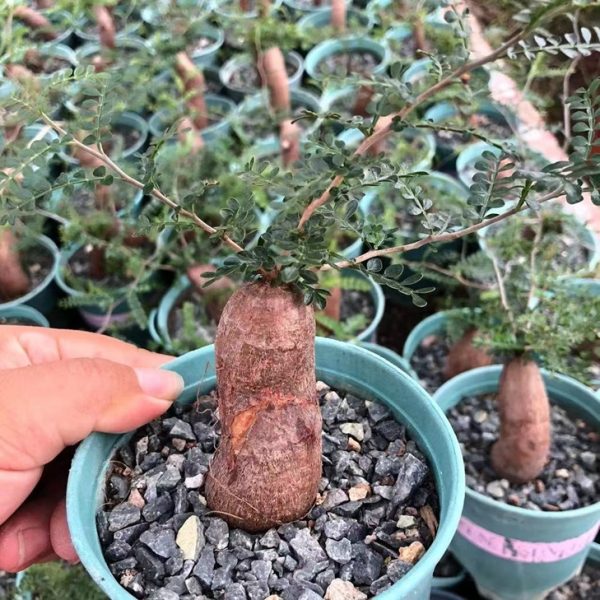Whatapp:
+278.3675.0634
Work Hours
Monday to Friday: 7AM - 7PM
Weekend: 10AM - 5PM

Price range: $20.00 through $60.00
Operculicarya Pachypus,Buy Operculicarya Pachypus online ,Operculicarya Pachypus top quality available
(Madagascar’s mini baobab look-alike)
Scientific Name: Operculicarya pachypus
Family: Anacardiaceae (same family as mango, pistachio, and poison ivy)
Native Range: Southwestern Madagascar
Common Type: Caudiciform succulent (swollen trunk base) (Operculicarya Pachypus)
This plant is sculptural, funky, and full of character. Perfect for pots, bonsai, or as a conversation-starting centerpiece.
Caudex (base/trunk):
Swollen, bottle-shaped or knobby with age
Gray to brown bark, rough and textured
Can grow into a thick, twisted form with tons of personality (Operculicarya Pachypus)
Branches:
Gnarled and contorted, often spiny
Small, pinnate leaves emerge during the growing season — similar to a mini tree or fern
Deciduous: drops leaves during dormancy, showing off that wild, bare structure
Height: Rarely exceeds 1–2 meters in cultivation
Tiny, inconspicuous, usually greenish or red
Dioecious (male and female flowers on separate plants)
Flowers often appear before or with the first flush of leaves
Endemic to arid, rocky habitats in Madagascar
Grows in full sun, in dry forest or spiny thicket ecosystems
Survives extreme drought by storing water in its caudex
This plant is a dream for caudex collectors and desert plant lovers — just give it the right conditions.
Light: Full sun to very bright light (essential for compact growth)
Soil: Fast-draining mix — cactus/succulent soil with extra perlite or pumice
Water:
Water regularly in summer (growing season)
Keep almost completely dry during winter dormancy
Temperature: Not frost-hardy! Keep above 5–10°C (41–50°F)
Growth Habit: Slow-growing, but rewarding over time — can be pruned for bonsai-style shaping (Operculicarya Pachypus)
Don’t overwater. Rot is the main threat, especially in cool conditions.
Repotting: Every 2–3 years, or when the caudex is pushing against the pot
Pests: Occasionally susceptible to mealybugs or scale if stressed
Native habitat is under threat due to deforestation and overcollection
Always buy from reputable nurseries that grow from seed or cuttings (not wild-collected)
Looks like a bonsai version of an ancient baobab
Super sculptural, even when leafless
One of the most unique caudiciforms you can grow in a pot or on a sunny windowsill
| Size | Small, Medium, large |
|---|
Reviews
There are no reviews yet.